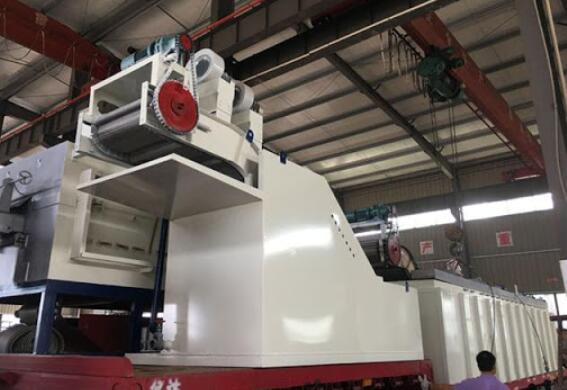Roasting kiln For the Iron Ore,manganese ore,bauxite ore

Roasting kiln For the Iron Ore,manganese ore,bauxite ore
Descrition :
Iron ores are rocks and minerals from which metallic iron can be economically extracted. The ores are usually rich in iron oxides and vary in color from dark grey, bright yellow, deep purple, to rusty red. The iron itself is usually found in the form of magnetite (Fe
3O4), hematite (Fe2O3), goethite (FeO(OH)), limonite (FeO(OH).n(H2O)) or siderite (FeCO3).
Ores carrying very high quantities of hematite or magnetite (greater than ~60% iron) are known as "natural ore" or "direct shipping ore", meaning they can be fed directly into iron-making blast furnaces.
Most reserves of such ore have now been depleted. Iron ore is the raw material used to make pig iron, which is one of the main raw materials to make steel. 98% of the mined iron ore is used to make steel. Indeed, it has been argued that iron ore is "more integral to the global economy than any other commodity, except perhaps oil".
Metallic iron is virtually unknown on the surface of the Earth except as iron-nickel alloys from meteorites and very rare forms of deep mantle xenoliths. Although iron is the fourth most abundant element in the Earth's crust, comprising about 5%, the vast majority is bound in silicate or more rarely carbonate minerals. Thethermodynamic barriers to separating pure iron from these minerals are formidable and energy intensive, therefore all sources of iron used by human industry exploit comparatively rarer iron oxide minerals, primarily hematite.
Prior to the industrial revolution, most iron was obtained from widely available goethite or bog ore, for example during the American Revolution and the Napoleonic wars. Prehistoric societies used laterite as a source of iron ore. Historically, much of the iron ore utilized by industrialized societies has been mined from predominantly hematite deposits with grades in excess of 70% Fe. These deposits are commonly referred to as "direct shipping ores" or "natural ores". Increasing iron ore demand, coupled with the depletion of high-grade hematite ores in the United States, after World War II led to development of lower-grade iron ore sources, principally the utilization of magnetite and taconite.
Iron ore mining methods vary by the type of ore being mined.
There are four main types of iron ore deposits worked currently, depending on the mineralogy and geology of the ore deposits. These are magnetite, titanomagnetite, massive hematite and pisolitic ironstone deposits.
Application :
roasting kiln(baking)processing production line are including in folowing step
1.the ore crushing the jaw crusher or cone crusher
2.the ore baking and cooling by the rotary klin and the rotary cooler
3.the ore grinding by the wet ball mill
4. wet magnetic separation by the magnitic seperator
Parameter :
High productivity 2.5-200tph;
Low heat consumption 20%
Excellent clinker quality and stable operation
High economic efficiency
Support quantity: 3
Obliquity: 3--3.5-4
Power: 30-420kw
Weight: 53-598.5tons






